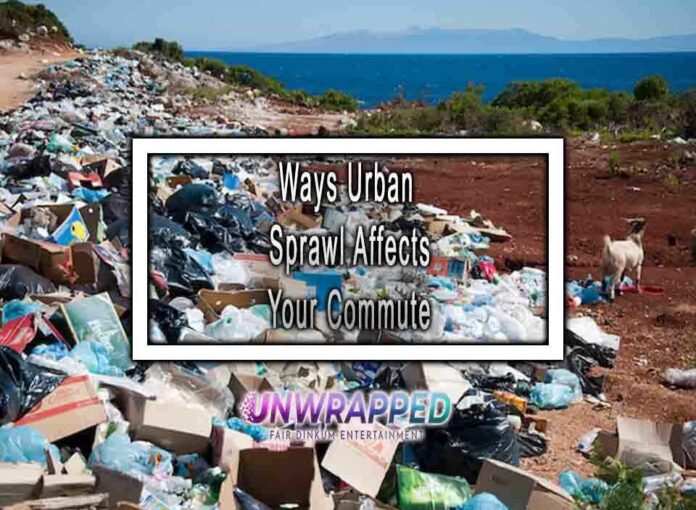Urban sprawl, characterized by the expansion of low-density, automobile-dependent development into previously undeveloped areas, can significantly impact commuting experiences. Here are ways in which urban sprawl affects your commute:
Increased Commute Times:
- Explanation: Urban sprawl often leads to the decentralization of cities, resulting in longer distances between residential areas, workplaces, and essential services.
- Impact: Longer distances contribute to increased commute times as individuals must travel greater distances to reach their destinations.

Traffic Congestion:
- Explanation: As urban areas spread out, more people rely on private vehicles for commuting. This leads to higher traffic volumes and increased congestion on roadways.
- Impact: Traffic congestion not only prolongs commute times but also contributes to stress, increased fuel consumption, and air pollution.
Reliance on Automobiles:
- Explanation: Urban sprawl often results in the lack of efficient public transportation systems. As a result, residents are more dependent on private vehicles for commuting.
- Impact: Increased reliance on automobiles contributes to issues such as traffic congestion, air pollution, and higher transportation costs for individuals and families.
Limited Public Transportation Options:
- Explanation: Sprawling urban development may not have well-developed or accessible public transportation networks, limiting viable alternatives to private car travel.
- Impact: Commuters are left with fewer options, particularly those who may prefer or rely on public transit, walking, or cycling.
Infrastructure Strain:
- Explanation: Expanding urban areas put a strain on transportation infrastructure. Roads, highways, and public transit systems may struggle to keep pace with the growing demand.
- Impact: Overloaded infrastructure can result in delays, maintenance issues, and the need for costly expansions to accommodate the increased population and traffic.
Environmental Impact:
- Explanation: The increased use of private vehicles associated with urban sprawl contributes to higher levels of air pollution and greenhouse gas emissions.
- Impact: Poor air quality not only affects the environment but also has health implications for commuters, leading to respiratory problems and other health issues.
Economic Costs:
- Explanation: Longer commutes and increased traffic congestion result in higher economic costs for individuals and businesses. This includes increased fuel expenses, vehicle maintenance costs, and lost productivity due to longer travel times.
- Impact: The economic burden can affect both individuals and the overall economic efficiency of a region.
Decreased Quality of Life:
- Explanation: Extended commute times and the stress associated with traffic congestion can contribute to a reduced quality of life for commuters.
- Impact: Longer commutes may result in less time for personal and family activities, increased stress levels, and a negative impact on overall well-being.
Loss of Open Spaces and Agricultural Land:
- Explanation: Urban sprawl often involves the conversion of open spaces, farmland, and natural habitats into developed areas.
- Impact: The loss of green spaces and agricultural land not only affects the environment but also contributes to the visual and psychological impact on commuters.
Inequitable Access to Opportunities:
- Explanation: Urban sprawl can lead to uneven distribution of resources, services, and job opportunities, impacting individuals’ ability to access education, healthcare, and employment without extensive commuting.
- Impact: This can exacerbate socioeconomic disparities, limiting upward mobility for certain communities.
Addressing the challenges posed by urban sprawl requires comprehensive urban planning, investments in public transportation infrastructure, and sustainable development practices. Smart growth strategies, mixed-use zoning, and policies that promote compact and walkable communities can help mitigate the negative effects of urban sprawl on commuting and overall urban livability.











